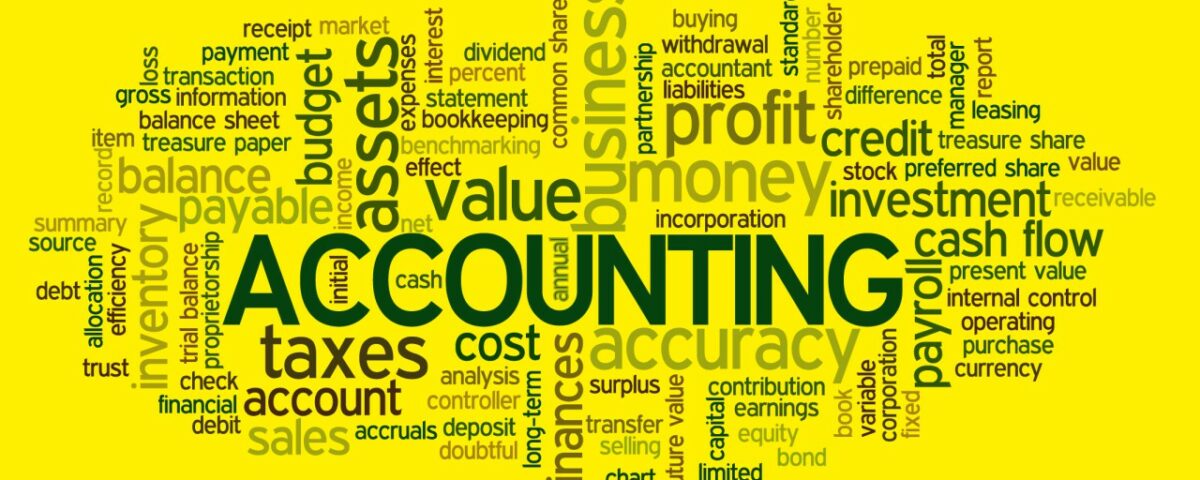
DeepSeek: Revolutionizing AI-Powered Search and Beyond
January 29, 2025
Revolutionize Your Qur’an Study This Ramadan with Khazain-ul-Hidayat Software 3.0
March 4, 2025Understanding Key Accounting Terms: A Simple Guide
Accounting can be a bit intimidating, especially when you’re unfamiliar with the terminology. Whether you’re a business owner, an aspiring entrepreneur, or simply someone trying to get a handle on finance, understanding accounting terms is essential. Here’s a simple guide to some of the most important accounting terms, definitions, and concepts, along with a bit of history to help you grasp their meanings more easily.
Accounting Period
An accounting period refers to the specific time frame covered by financial statements. Common examples include fiscal years, calendar years, or quarterly periods (three-month intervals). Businesses track their financial activities during this time, which is essential for reporting on their operations.
Accounts Payable (AP)
Accounts payable represents the money a business owes to creditors—anything from unpaid invoices to bank loans or credit card debts. These are classified as liabilities, meaning they represent money the company must pay in the future.
Accounts Receivable (AR)
On the flip side, accounts receivable refers to money owed to a company by its customers. This usually arises when goods or services are sold on credit. AR is classified as an asset because it represents income that will come in the future.
Accrual Basis Accounting
Accrual accounting records financial transactions when they occur, regardless of when money actually changes hands. For example, a company that sells goods on credit would record the sale as revenue as soon as the transaction occurs, not when payment is received.
This is different from cash basis accounting, which only records transactions when the money is actually exchanged. Large companies often use accrual accounting, while smaller businesses might opt for cash basis.
Accruals
Accruals refer to revenues and expenses that have been recognized but not yet recorded in the accounts. They are recorded before the cash exchange happens. For example, if a company hires a contractor but hasn’t paid them yet, the cost of their services would be recognized as an accrual.
Assets
Assets are resources of value that a business owns or controls, expected to generate future economic benefits. These can be physical, like equipment or real estate, or intangible, like patents or trademarks.
Balance Sheet
A balance sheet is a key financial statement that shows a company’s financial position at a specific point in time. It lists assets, liabilities, and equity, providing a snapshot of the business’s financial health.
Capital
In business terms, capital refers to the resources or funds a company can use to generate revenue. This can include money invested by owners (equity capital) or borrowed funds (debt capital). Working capital is the money left over after subtracting current liabilities from current assets.
Cash Basis Accounting
In cash basis accounting, transactions are recorded only when cash actually changes hands—meaning that revenue and expenses are logged only when payment is made or received. This method is typically used by small businesses.
Cash Flow
Cash flow is the total movement of cash into and out of a business during a given period. It’s an important indicator of a company’s financial health, showing whether the business can meet its short-term financial obligations.
Certified Public Accountant (CPA)
A CPA is an accountant who has passed a certification exam and is licensed to offer services such as tax preparation, auditing, and consulting. Becoming a CPA requires meeting education and exam requirements.
Chart of Accounts
A chart of accounts (COA) is a master list of all accounts used in a company’s financial system. It organizes the accounts into categories like assets, liabilities, equity, expenses, and revenues, ensuring that transactions are properly classified.
Closing the Books
Closing the books means finalizing the accounting records for a specific period. This process ensures that all transactions for that period have been recorded and that the financial statements are accurate.
Cost of Goods Sold (COGS)
COGS refers to the direct costs involved in producing a product or providing a service. This includes expenses like materials, labor, and overhead. Subtracting COGS from total revenue gives you gross profit.
Credit and Debit
In accounting, credits and debits are used to record transactions. Debits increase assets and decrease liabilities, while credits do the opposite—decreasing assets and increasing liabilities. These entries ensure the books are balanced, especially in double-entry accounting.
Depreciation
Depreciation is the gradual reduction in value of a company’s fixed assets (like equipment, machinery, or real estate). It reflects the aging or wear and tear of these assets over time.
Diversification
Diversification is a strategy used to manage risk by spreading investments across different assets, industries, or sectors. This way, if one area of investment suffers, the others can offset the loss.
Dividends
Dividends are payments made to a company’s shareholders from its profits. Typically paid in cash, dividends represent a way for companies to share their profits with investors.
Double-Entry Bookkeeping
Double-entry bookkeeping records every financial transaction twice—once as a debit and once as a credit. This ensures that the accounting books are always balanced and provides a more accurate record of financial activities.
Enrolled Agent (EA)
An enrolled agent is a tax professional who is licensed to represent taxpayers in dealings with the IRS. EAs can handle audits, appeals, and other tax-related matters.
Equity
Equity represents the value of an owner’s interest in a business, calculated as the difference between total assets and total liabilities. In a publicly traded company, equity is shared among the shareholders.
Fixed Cost
Fixed costs are expenses that remain the same regardless of the business’s production or sales levels. Examples include rent, salaries, and insurance.
General Ledger
The general ledger is the main record-keeping system for a company’s financial transactions. It includes all accounts such as assets, liabilities, and equity and forms the basis for the company’s financial statements.
Generally Accepted Accounting Principles (GAAP)
GAAP refers to a set of rules and standards that guide the preparation of financial statements. These principles ensure consistency and transparency in financial reporting, especially for publicly traded companies.
Gross Profit
Gross profit is the income a company earns from sales minus the cost of producing the goods or services sold. It’s a key indicator of a company’s profitability before accounting for other operating expenses.
Income Statement
An income statement shows a company’s revenues and expenses over a specific period, resulting in a net profit or loss. It’s one of the three main financial statements, alongside the balance sheet and cash flow statement.
Inventory
Inventory refers to the goods a company holds for resale, or materials used in production. Managing inventory effectively is crucial for businesses that deal with physical products.
Liability
Liabilities are debts or obligations that a business owes to others. These can be current (due within a year) or long-term (due after more than a year). Examples include loans, credit lines, and accounts payable.
Liquidity
Liquidity describes how easily an asset can be converted into cash. For instance, cash is the most liquid asset, while real estate is considered less liquid because it takes longer to sell.
Net Profit
Net profit (or net income) is the amount of money a company earns after subtracting all expenses, including taxes, interest, and cost of goods sold. It’s an essential measure of a business’s profitability.
On Credit
When a product or service is sold on credit, it means the customer agrees to pay for it later, rather than at the time of purchase. This creates an accounts receivable for the business.
Overhead
Overhead refers to ongoing operational expenses not directly tied to product creation, such as rent, utilities, and administrative salaries. These costs must be covered by a business’s sales.
Payroll
Payroll refers to the administration of employee wages, benefits, and tax deductions. Proper payroll accounting ensures that employees are paid correctly and on time.
Present Value
Present value is a financial concept used to estimate the value of future cash flows in today’s terms, taking into account factors like inflation and the time value of money.
Receipt
A receipt is proof of a financial transaction, often provided to customers after a purchase. It serves as documentation for the business and the consumer for tax and record-keeping purposes.
Retained Earnings
Retained earnings are the portion of a company’s profit that is not distributed as dividends but is reinvested into the business for growth or debt reduction.
Return on Investment (ROI)
ROI measures the profitability of an investment. It’s calculated by dividing the net profit by the cost of the investment and multiplying by 100 to get a percentage.
Revenue
Revenue is the total income generated from selling goods or services, excluding any additional income from investments or other non-core business activities.
Single-Entry Bookkeeping
Single-entry bookkeeping is a simpler method of financial tracking, often used by small businesses. Each transaction is recorded only once, either as a revenue or expense.
Trial Balance
A trial balance is a report of all ledger account balances to ensure that debits equal credits. It’s used to detect errors before preparing the final financial statements.
Variable Cost
Variable costs change
with production volume. For example, materials and labor costs increase as more products are made. These costs fluctuate depending on the company’s output level.
By understanding these key accounting terms and concepts, you can gain better insight into how businesses manage their finances and make informed decisions. Whether you’re running your own business or just learning about finance, this knowledge will help you navigate the world of accounting with confidence. Above all, many of these tasks can be automated via software, and Memon Business Solutions offers a wide range of ERP modules to automate any business easily.
Disclaimer: The content provided on this website is for general informational purposes only and does not constitute professional financial advice. Readers should seek guidance from a qualified financial advisor before making any financial decisions or taking action based on the information provided.



